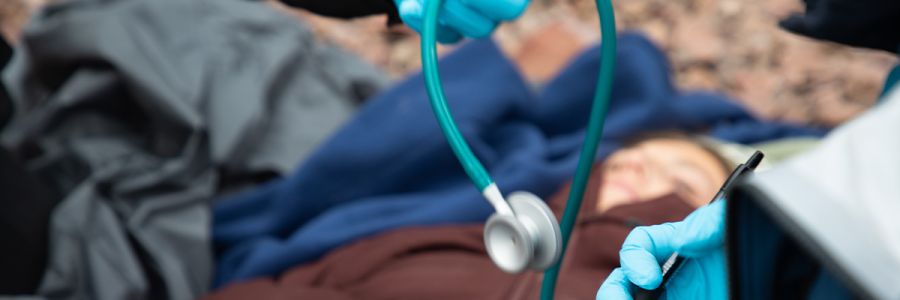Partnerships
The OHRP utilizes a systems-based approach to tackle some of Montana's biggest healthcare and public health challenges, which requires strong partnerships. We believe that by building strong partnerships, we can maximize the impact of the various healthcare and public health initiatives in Montana, which will ultimately lead to improved health outcomes for all Montanans.
Partnership Projects
-
The OHRP partnered with the Missoula College Nursing Program to develop and implement a fully online, asynchronous LPN-to-RN Bridge program for practicing LPNs in rural Montana. This program allows LPNs across the state to upskill to an RN in three semesters. The students in this program complete their clinical rotations in their community or a nearby community. The OHRP manages this project, along with the HRSA funding that currently supports this program.
Please visit the Missoula College LPN-to-RN Bridge Program website for more information about this program and how to apply.
This program is supported by the Health Resources and Services Administration (HRSA) of the U.S. Department of Health and Human Services (HHS) as part of an award totaling $3.6 million. The contents are those of the author(s) and do not necessarily represent the official views of, nor an endorsement, by HRSA, HHS, or the U.S. Government. For more information, please visit HRSA.gov.
-
The UM Health Extension Office Network is an innovative network between higher education, healthcare facilities, and public health entities. The Network consists of a core team of organizations serving communities in western Montana. These organizations include:
- St. Luke Community Health
- Logan Health
- 91次元 Office of Health Research & Partnership (UM OHRP)
- Lake City-County Public Health Department; 5) Flathead City-County Public Health Department
- Confederated Salish and Kootenai Tribes' Tribal Health Department
Program activities are coordinated by the UM OHRP in close collaboration with the UM School of Public and Community Health Sciences, and the Center for Children, Families, and Workforce Development (CCFWD). The UM Health Extension Office Network aims to:
- Improve access through the development of healthcare and public health workforce development strategies that will increase the number of allied health, primary care, and specialty providers in the workforce for Lake and Flathead Counties.
- Expand capacity and services by coordinating patient care and data sharing with all of the network members to ensure high-quality care and continuity of care for residents in western Montana.
- Enhance outcomes by establishing CABs in Lake and Flathead Counties that will provide input to the Network, which will inform the services and interventions provided by the network members.
- Sustainability will be a focus by developing a comprehensive sustainability plan and business model that is supported by the 91次元, network members, and local, state, and federal officials.
-
Presently at UM, there are multiple health profession programs and units that provide services to students, staff, and the public, some as part of their academic curriculum for students. These services are provided at a variety of sites and venues on and off campus.
UM On-Campus Health Clinics/Centers:
- Curry Health Center
- DeWit RiteCare Speech, Language & Hearing Clinic
- Health Services Pharmacy
- UM Department of Counseling
- Skaggs Institute of Health Innovation
In conversations with a number of these programs, it is apparent each has developed its own policies and procedures on how to bill, code, collect and establish patient medical records for such services. The programs are interested in moving towards a more coordinated system, similar to an academic health center.
Areas that will need to be addressed during this process include:
- Revenue Cycle
- Billing, Coding, and Collection policies and procedures should be consistent across the UM Campus for all healthcare-related clinics and centers.
- Patient Medical Records Information
- Patient Medical Record Management policies and procedures should be consistent across the UM Campus for all healthcare-related clinics and centers.
- Accounting
- Revenue and Collections for such services should be clarified in terms of how they are accounted for and who benefits and has access to these funds.
- Workflow/Operations
- Consistency across the healthcare clinics and centers regarding workflows (i.e., scheduling, follow-up, referrals, etc.) should be adopted by all clinics/centers on-campus to increase patient accessibility.
Currently, we are conducting an analysis of the clinic's operations and needs. After this assessment is complete we will develop a strategic plan to determine how to better coordinate all of the clinic's operations.
